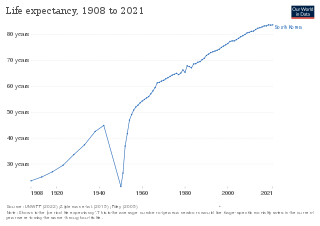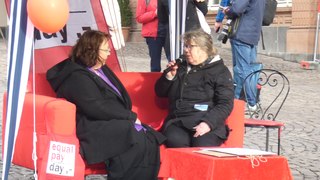Glass-ceiling index 2024
Graphs are unavailable due to technical issues. There is more info on Phabricator and on MediaWiki.org. |
https://www.economist.com/graphic-detail/glass-ceiling-index [2]
- Source: Statista - Glass-ceiling index 2021 [3]
Glass-Ceiling Index (GCI) is an index for visualizing the glass ceiling metaphor, created by The Economist , combining data on higher education, labour-force participation, pay, child cares costs, maternity and paternity rights business-school applications and representation in senior jobs. [1] In the 2024 index, the countries where inequality was the lowest were Iceland, Sweden, Norway, Finland, and France. The countries lowest on the index were Israel, Switzerland, Japan, Turkey and South Korea. [2] This index shows how women are still lagging their male counterparts in senior business roles. It is updated every year in a rank of 29 OECD countries. It was launched in 2013 when there were five indicators and 26 countries, but today consists of ten indicators (higher education, labour-force participation, gender wage gap, GMAT exams taken by women, women in managerial positions, women on company boards, net child-care costs, paid leave for mothers, paid leave for fathers and women in parliament) for 29 OECD countries. [2]
Graphs are unavailable due to technical issues. There is more info on Phabricator and on MediaWiki.org. |
https://www.economist.com/graphic-detail/glass-ceiling-index [2]

A glass ceiling is a metaphor usually applied to people of marginalized genders, used to represent an invisible barrier that prevents an oppressed demographic from rising beyond a certain level in a hierarchy. No matter how invisible the glass ceiling is expressed, it is actually an obstacle difficult to overcome. The metaphor was first used by feminists in reference to barriers in the careers of high-achieving women. It was coined by Marilyn Loden during a speech in 1978.

Parental leave, or family leave, is an employee benefit available in almost all countries. The term "parental leave" may include maternity, paternity, and adoption leave; or may be used distinctively from "maternity leave" and "paternity leave" to describe separate family leave available to either parent to care for small children. In some countries and jurisdictions, "family leave" also includes leave provided to care for ill family members. Often, the minimum benefits and eligibility requirements are stipulated by law.

A part-time job is a form of employment that carries fewer hours per week than a full-time job. They work in shifts. The shifts are often rotational. Workers are considered to be part-time if they commonly work fewer than 30 hours per week. According to the International Labour Organization, the number of part-time workers has increased from one-quarter to a half in the past 20 years in most developed countries, excluding the United States. There are many reasons for working part-time, including the desire to do so, having one's hours cut back by an employer and being unable to find a full-time job. The International Labour Organisation Convention 175 requires that part-time workers be treated no less favourably than full-time workers.

The labor force in Japan numbered 65.9 million people in 2010, which was 59.6% of the population of 15 years old and older, and amongst them, 62.57 million people were employed, whereas 3.34 million people were unemployed which made the unemployment rate 5.1%. The structure of Japan's labor market experienced gradual change in the late 1980s and continued this trend throughout the 1990s. The structure of the labor market is affected by: 1) shrinking population, 2) replacement of postwar baby boom generation, 3) increasing numbers of women in the labor force, and 4) workers' rising education level. Also, an increase in the number of foreign nationals in the labor force is foreseen.
The following are links to some international rankings of the United States.
A mommy track is a path in a woman's life that puts priority to being a mother. It can also specifically refer to work arrangements for women in the workforce that facilitate motherhood, such as flexible hours, but at the same time usually provides fewer opportunities for career advancement. References to the mommy track often go along with being a housewife, "opting out" of the workforce, temporarily or even permanently. Women following the mommy track may be contrasted to career women who prioritize their careers more than having children.

The Italian welfare state is based partly upon the corporatist-conservative model and partly upon the universal welfare model.

The Organisation for Economic Co-operation and Development defines the employment rate as the employment-to-population ratio. This is a statistical ratio that measures the proportion of a country's working age population that is employed. This includes people that have stopped looking for work. The International Labour Organization states that a person is considered employed if they have worked at least 1 hour in "gainful" employment in the most recent week.
Gender inequality is the social phenomenon in which people are not treated equally on the basis of gender. This inequality can be caused by gender discrimination or sexism. The treatment may arise from distinctions regarding biology, psychology, or cultural norms prevalent in the society. Some of these distinctions are empirically grounded, while others appear to be social constructs. While current policies around the world cause inequality among individuals, it is women who are most affected. Gender inequality weakens women in many areas such as health, education, and business life. Studies show the different experiences of genders across many domains including education, life expectancy, personality, interests, family life, careers, and political affiliation. Gender inequality is experienced differently across different cultures and also affects non-binary people.

Women in South Korea have experienced significant improvements for social changes in recent years, compared to previous times, when Confucianism was deeply imbued in the culture. The economy of South Korea has tremendously improved due to urbanisation, industrialisation, military authoritarianism, democratic reform, and social liberalisation since the late 1960s. Gender roles and gender identities have been modified in response to modernity. More than half of South Korean women are employed. In a 2018 OECD economy survey, it was 56.1%. It is lower than OECD average. More than 25% of married women are employed as full-time workers.

Life expectancy has been rising rapidly and South Korea ranked 3rd in the world for life expectancy. South Korea has among the lowest HIV/AIDS adult prevalence rate in the world, with just 0.1% of the population being infected, significantly lower than the U.S. at 0.6%, France's 0.4%, and the UK's 0.3% prevalence rate. South Korea has a good influenza vaccination rate, with a total of 43.5% of the population being vaccinated in 2019. A new measure of expected human capital calculated for 195 countries from 1920 to 2016 and defined for each birth cohort as the expected years lived from age 20 to 64 years and adjusted for educational attainment, learning or education quality, and functional health status was published by the Lancet in September 2018. South Korea had the sixth highest level of expected human capital with 26 health, education, and learning-adjusted expected years lived between age 20 and 64 years.
The Social Institutions and Gender Index (SIGI) is an index that measures discrimination against women. It solely focuses on social institutions which are formal and informal laws, social norms and customary practices that impact the roles of women. The SIGI is a multifaceted measure that focuses on four dimensions: Discrimination in the family, Restricted physical integrity, Restricted access to productive and financial resources, and Restricted civil liberties.
Canada ranks among the highest in international measurements of government transparency, civil liberties, quality of life, economic freedom, education levels, gender equality, public services, public security and environmental sustainability. It ranks among the lowest of the most developed countries for housing affordability, healthcare services and foreign direct investment.

The feminization of the workplace is the feminization, or the shift in gender roles and sex roles and the incorporation of women into a group or a profession once dominated by men, as it relates to the workplace. It is a set of social theories seeking to explain occupational gender-related discrepancies.
Social security in Germany is codified on the Sozialgesetzbuch (SGB), or the "Social Code", contains 12 main parts, including the following,

The Women's Economic Opportunity Index is an index compiled by the Economist Intelligence Unit that measures the enabling environment for women's economic participation in 128 countries. The Economist Intelligence Unit's Women's Economic Opportunity Index is based on 29 indicators that measure a country's laws, regulations, practices, customs and attitudes that allow women to participate in the workforce under conditions roughly equal to those of men, whether as wage-earning employees or as owners of a business. The index was first produced in 2010, with an updated index produced in 2012. Three indicators were added and 15 new countries were assessed in the 2012 version of the Index.

The Gender Inequality Index (GII) is an index for the measurement of gender disparity that was introduced in the 2010 Human Development Report 20th anniversary edition by the United Nations Development Programme (UNDP). According to the UNDP, this index is a composite measure to quantify the loss of achievement within a country due to gender inequality. It uses three dimensions to measure opportunity cost: reproductive health, empowerment, and labor market participation. The new index was introduced as an experimental measure to remedy the shortcomings of the previous indicators, the Gender Development Index (GDI) and the Gender Empowerment Measure (GEM), both of which were introduced in the 1995 Human Development Report.

Female participation and advancement in majority Muslim countries, or nations in which more than 50% of the population identifies as an adherent of the Islamic faith, have traditionally been areas of controversy. Several Western nations, such as the United States and Western Europe, have criticised majority Muslim nations for the lack of involvement and opportunity for women in the private sector.
In South Korea, gender inequality is derived from deeply rooted patriarchal ideologies with specifically defined gender-roles. While it remains especially prevalent in South Korea's economy and politics, gender inequality has decreased in healthcare and education.

The gender pay gap or gender wage gap is the average difference between the remuneration for men and women who are working. Women are generally found to be paid less than men. There are two distinct numbers regarding the pay gap: non-adjusted versus adjusted pay gap. The latter typically takes into account differences in hours worked, occupations chosen, education and job experience. In the United States, for example, the non-adjusted average woman's annual salary is 79–83% of the average man's salary, compared to 95–99% for the adjusted average salary.